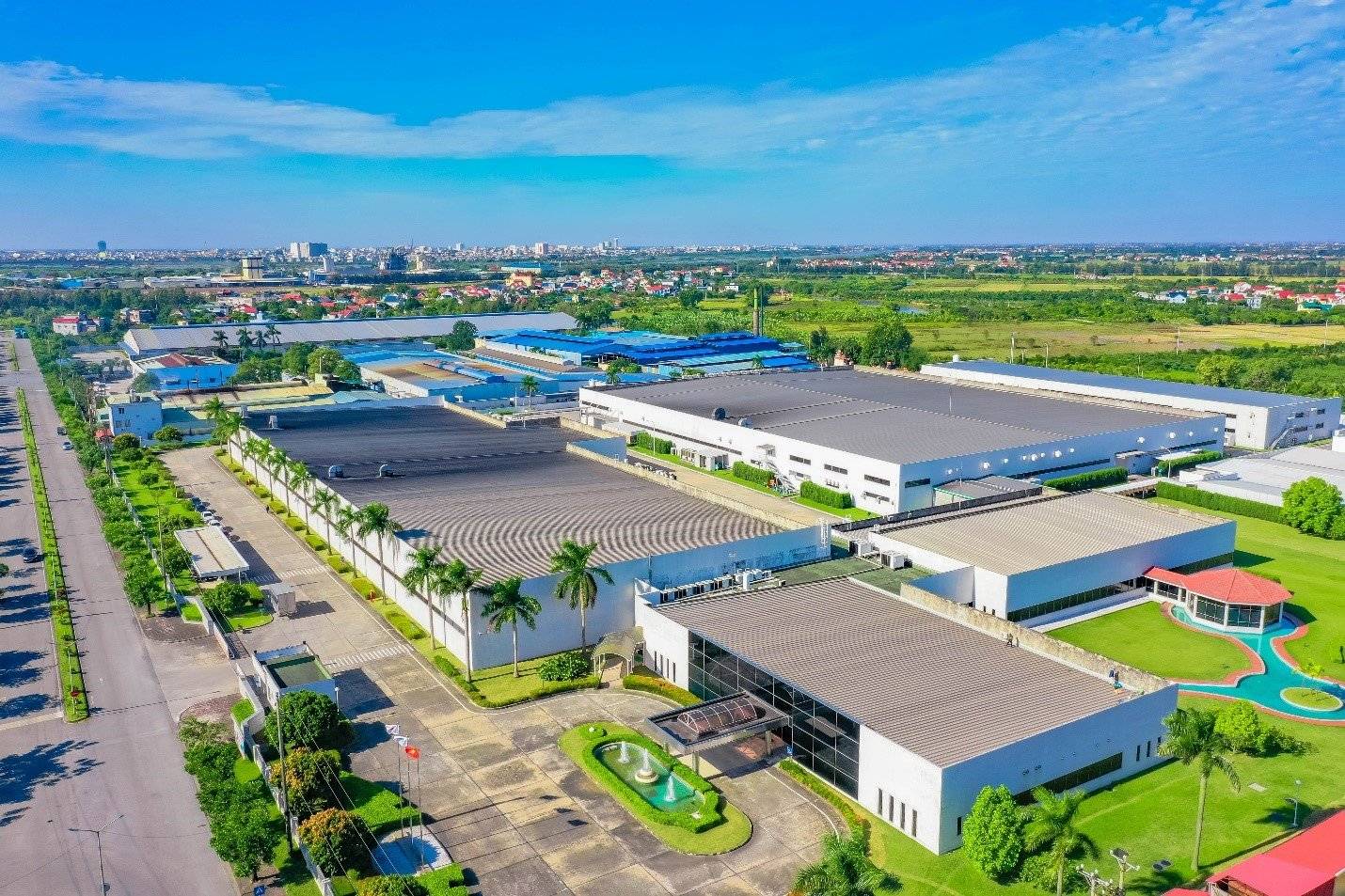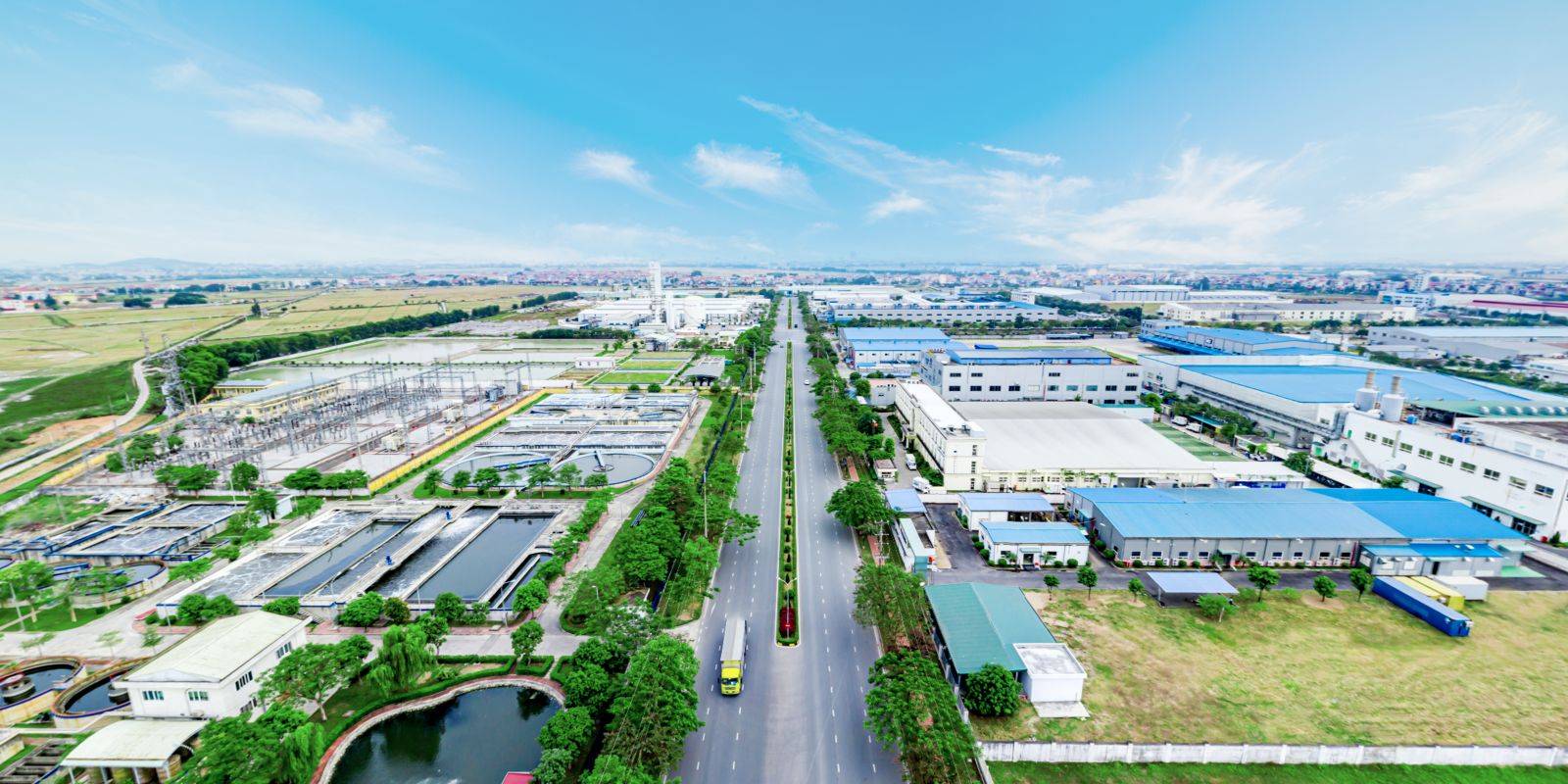Since the beginning of the year, Vietnam has approved 10 new industrial park (IP) investment projects, alongside the groundbreaking of several large-scale parks such as VSIP Lang Son and VSIP Ha Tinh.
In the first half of 2024, Vietnam’s industrial real estate market demonstrated positive momentum. Supply remained stable, rental demand steadily increased, and rental prices saw a slight uptick.
STABLE SUPPLY ACROSS KEY REGIONS
According to the Dat Xanh Services Economic–Financial–Real Estate Research Institute (FERI), total industrial real estate supply in the first six months of 2024 continued its stable trend compared to the previous quarter, reaching approximately 14,500 hectares in the North and 27,700 hectares in the South. Although there were no major fluctuations compared to the end of 2023, the market still saw new projects launching in various provinces.
The growth in industrial rental demand was attributed to a shift in production structures toward manufacturing. The recovery in production activities during Q2/2024 significantly improved occupancy rates in industrial parks. Average occupancy in both regions reached high levels: 83% in the North (up 3 percentage points year-over-year) and 92% in the South (up 1 percentage point).
Rental prices rose slightly due to strong demand amid relatively limited supply growth. In the North, average rental rates increased by 2%, reaching USD 130/m²/remaining lease term. In the South, rates rose by 7%, averaging USD 190/m²/remaining lease term.
Sustained Investor Interest in the Segment
According to the Vietnam Association of Realtors (VARS), with government-backed investment policies, infrastructure improvements, and Vietnam’s strategic location in the global supply chain, the industrial real estate segment remains a market leader. It continues to attract considerable interest from both domestic and international investors.
VARS statistics show that since early 2024, 10 new industrial park projects have received investment policy approvals. Several major parks have also broken ground, including VSIP Lang Son and VSIP Ha Tinh. Additionally, leading real estate developers — some of whom previously focused only on residential properties — and diversified conglomerates such as DIC Holdings, Phat Dat, Khang Dien, and Ha Do have been planning to expand their land banks for industrial real estate development.
“Vietnam is witnessing robust growth in industrial zones and economic zones nationwide,” VARS noted. “This trend reflects the government’s commitment to promoting a modern, sustainable industrial sector, with the goal of positioning Vietnam as a vital link in the global value chain.” VARS added that the “Industrial Development Strategy to 2025, Vision to 2035” also plays a pivotal role by emphasizing the development of modern and sustainable industrial parks, fostering high-tech industries, and supporting enterprises through innovation initiatives.
NEW INVESTORS TO ENTER THE MARKET
Dr. Phạm Anh Khôi, Director of Dat Xanh Services – FERI, stated that in the near future, beyond traditional industrial parks, the market will see increased participation from new developers focusing on ready-built factories (RBFs) and ready-built warehouses (RBWs) to meet diverse business needs. Both domestic and foreign enterprises continue to show strong interest in Vietnam’s industrial real estate sector. For example, Taseco Land (TAL) aims to develop five new industrial parks totaling over 1,000 hectares within the next five years. Foreign investors are expected to account for around 75% of Vietnam’s RBW market share.
“The industrial real estate market will continue to grow, especially as free trade agreements take effect and Vietnam increasingly attracts foreign investment into the manufacturing sector,” Dr. Khôi emphasized.
According to Mr. Hiếu Lê, Senior Director and Head of Advisory & Transactions at CBRE Vietnam, the country continues to attract new FDI thanks to ongoing improvements in infrastructure, government support for manufacturing, and the relocation of production from neighboring countries. Moreover, Vietnam’s domestic market holds its own appeal, with long-established foreign enterprises seeking further expansion.
Mr. Hiếu also highlighted the emerging trend of green industrial real estate. Initiated by a few pioneering IPs in recent years, this trend involves integrating eco-friendly elements to reduce operational costs — such as using recycled water systems and solar power instead of grid electricity. Over the past five years, this green model has gained traction among major enterprises and corporations.
Ms. Nguyễn Hoài An, Senior Director at CBRE Vietnam’s Hanoi branch, forecasts that over the next three years, industrial land rents will rise 5–8% annually in the North and 3–7% annually in the South. Meanwhile, rental rates for RBFs and RBWs are expected to increase by 1–4% per year, with RBFs seeing higher growth. Products offering flexibility between warehouse and factory use, as well as multi-story warehouses/factories, will become more prevalent in cities with limited land supply.
“With ongoing transport infrastructure development, the industrial real estate market could expand into emerging regions such as Tier-2 markets and border economic zones,” Ms. An commented. “The sector’s vibrancy will be further driven by both existing investors expanding their portfolios and new investors entering the market.”



